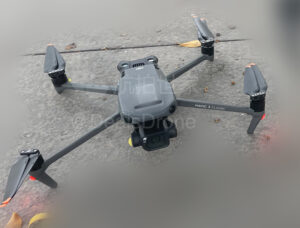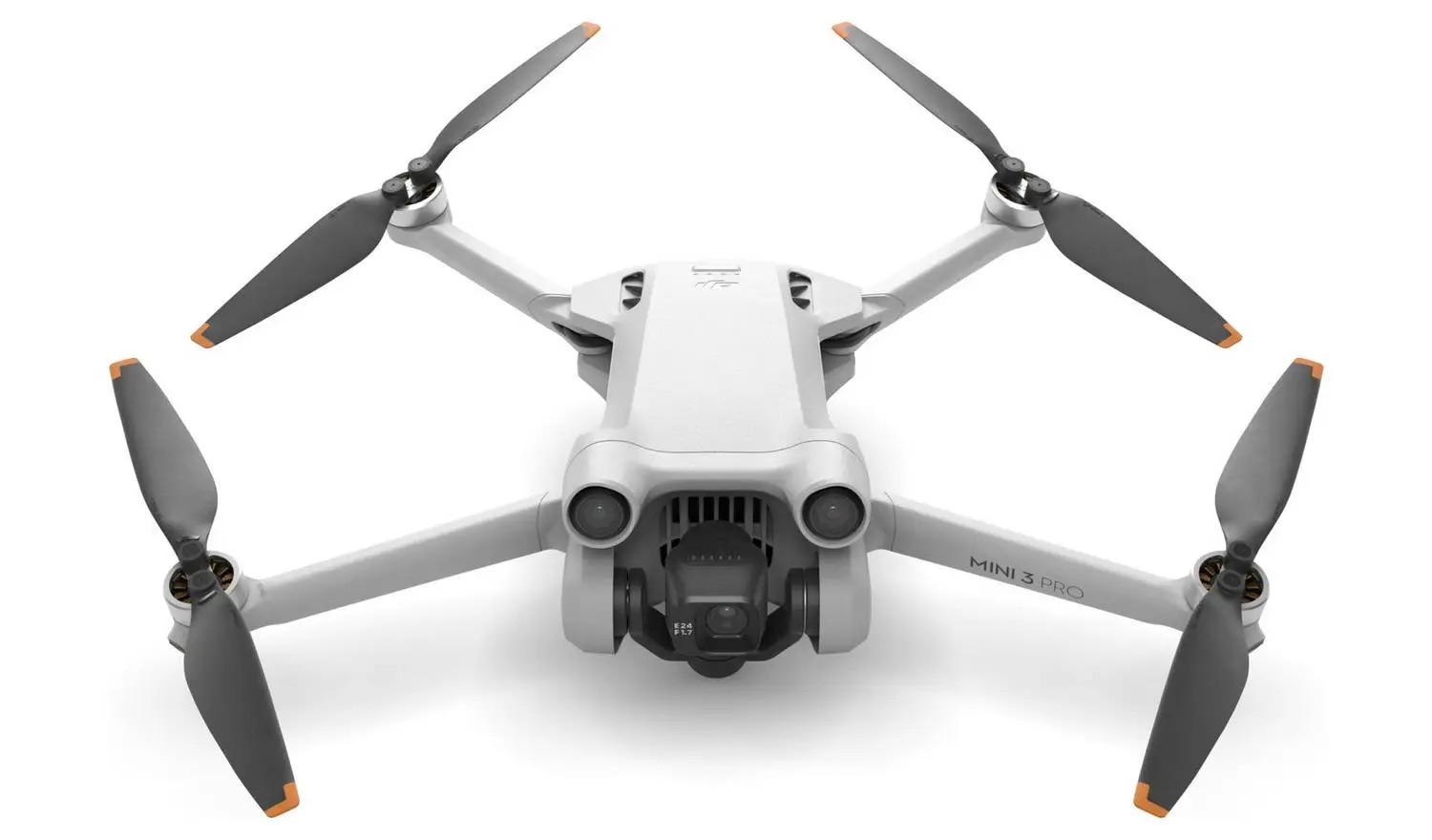
The DJI Mini 3 Pro will be of interest to landscape photographers due to its small size and advanced features. This features are a considerable improvement compared to its predecessor, the DJI Mini 2. However, the DJI Mini 3 Pro’s small size comes with some limitations compared to it’s big brothers, the DJI Air 2s and DJI Mavic 3.
For landscape photographers who are considering buying the Mini 3 Pro, it has several strengths and limitation worth considering.
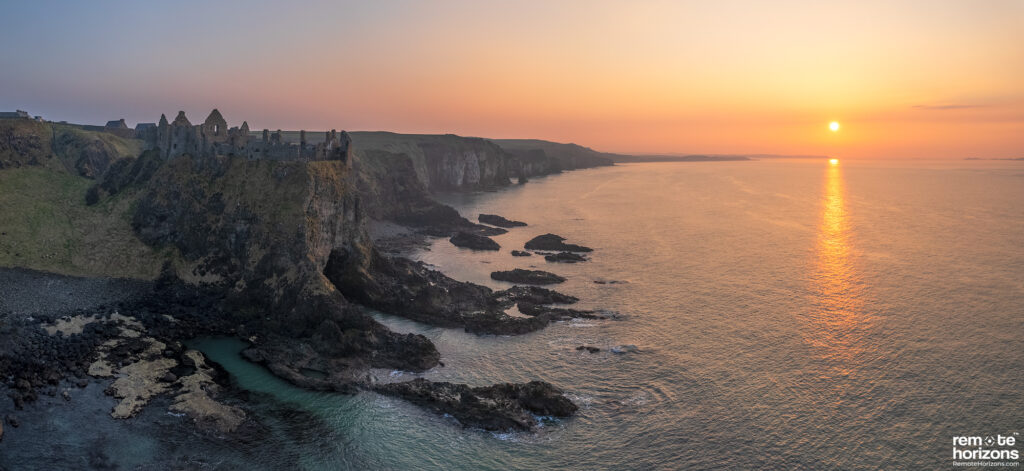
Where will you fly your drone?
When deciding which drone to buy, the most important thing to consider first is where you want to fly it. It doesn’t matter how brilliant the camera is on the most expensive drone. If you want to fly it somewhere which doesn’t allow that size of drone, you won’t be able to take any photographs at all. The main advantage of the DJI Mini series of drones is the fact they weigh less than 250g. In most countries having a drone within this weight category means you can fly in lots of places that bigger drones cannot.
If you know you want to take photographs somewhere that only a Mini series drone will be allowed, then let me draw a quick conclusion – the Mini 3 Pro is the best drone for you, buy it! If you are a landscape photographer who could potentially buy any drone, read on…
Camera / Image Quality
The DJI Mini 3 Pro has a 1/1.3 inch CMOS sensor coupled with a 24mm (equivalent) lens with a maximum aperture of f/1.7. It will produce native 12MP images, with a mode which will allow you to take 48MP images.
I have previous experience of using a drone with a 1/2 inch sensor (DJI Mavic Air 2) and a drone with a 1 inch sensor (DJI Air 2s). The difference between these two sensors in terms of image quality is extremely significant (I would go so far as to say it is a night and day difference). I would describe the 1/2 inch sensor as being mobile phone camera quality. This means it is great for creating landscape photographs suitable for use on websites, social media and for creating small prints.
I would describe the 1 inch sensor as having the image quality of a large camera. The colours, detail/sharpness, noise levels and dynamic range are excellent, allowing me to create really high quality large landscape photography prints. Although most of my aerial landscape photography is shot at ISO100, the larger sensor of course allows for higher quality images at higher ISOs.
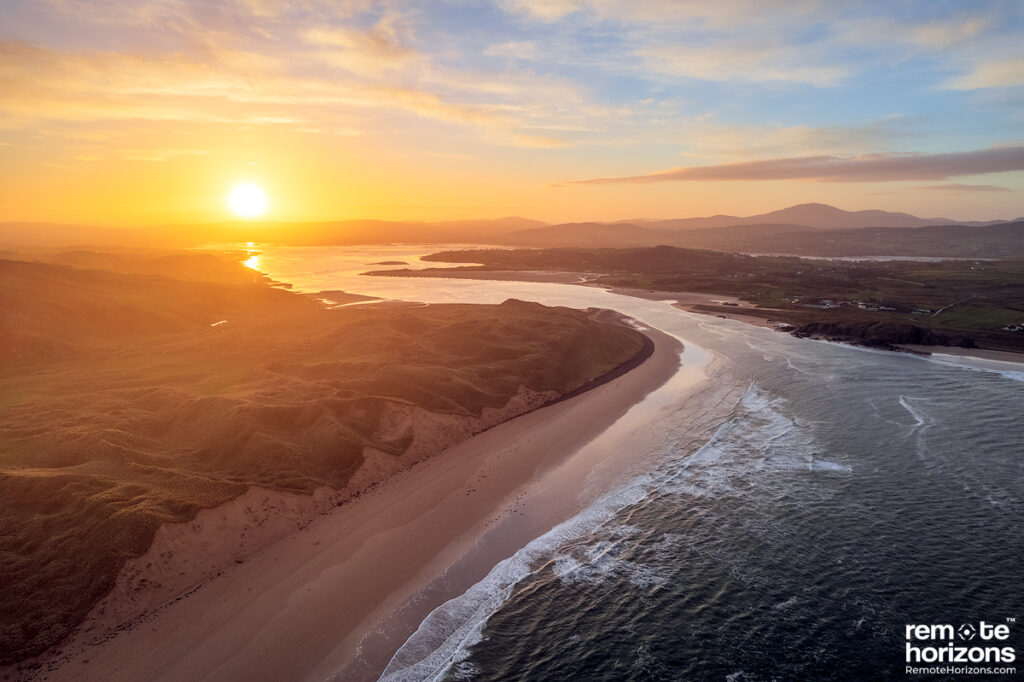
The DJI Mini 3 Pro sensor size, therefore, sits approximately half-way between these two. This means I am expecting there to be some image quality improvement over 1/2 inch sensor drones like the DJI Mavic Air 2, with a significant image quality improvement over the DJI Mini 2 which has a 1/2.3 inch sensor. However, the smaller sensor of the DJI Mini 3 Pro will still trail some distance the sensors of its bigger brothers.
It is important to note that DJI claims this drone will take 48MP images, but this is marketing talk. This is a 12MP sensor capable of outputting 48MP images (just like the DJI Mavic Air 2). However, the quality of the 48MP images will not be better than a drone with a 1 inch 20MP sensor like the DJI Air 2s. My own experience is that these 48 megapixel images have less sharpness, worse colours and more noise than the native 12MP images. I found that shooting in 12MP mode and then using the Adobe Lightroom Super Resolution mode was a better way to increase resolution. Do not let the fact the DJI Mini 3 Pro creates 48MP photographs be your reason for buying it.
All things considered, if you are a landscape photographer who demands the very best image quality and wants to make big prints (A3 and larger) or supply digital files for commercial use, you should try and get a drone with at least a 1 inch sensor. However, for a lot of landscape photographers who primarily post their work on social media, I suspect that the DJI Mini 3 Pro will be more than adequate in terms of image quality.
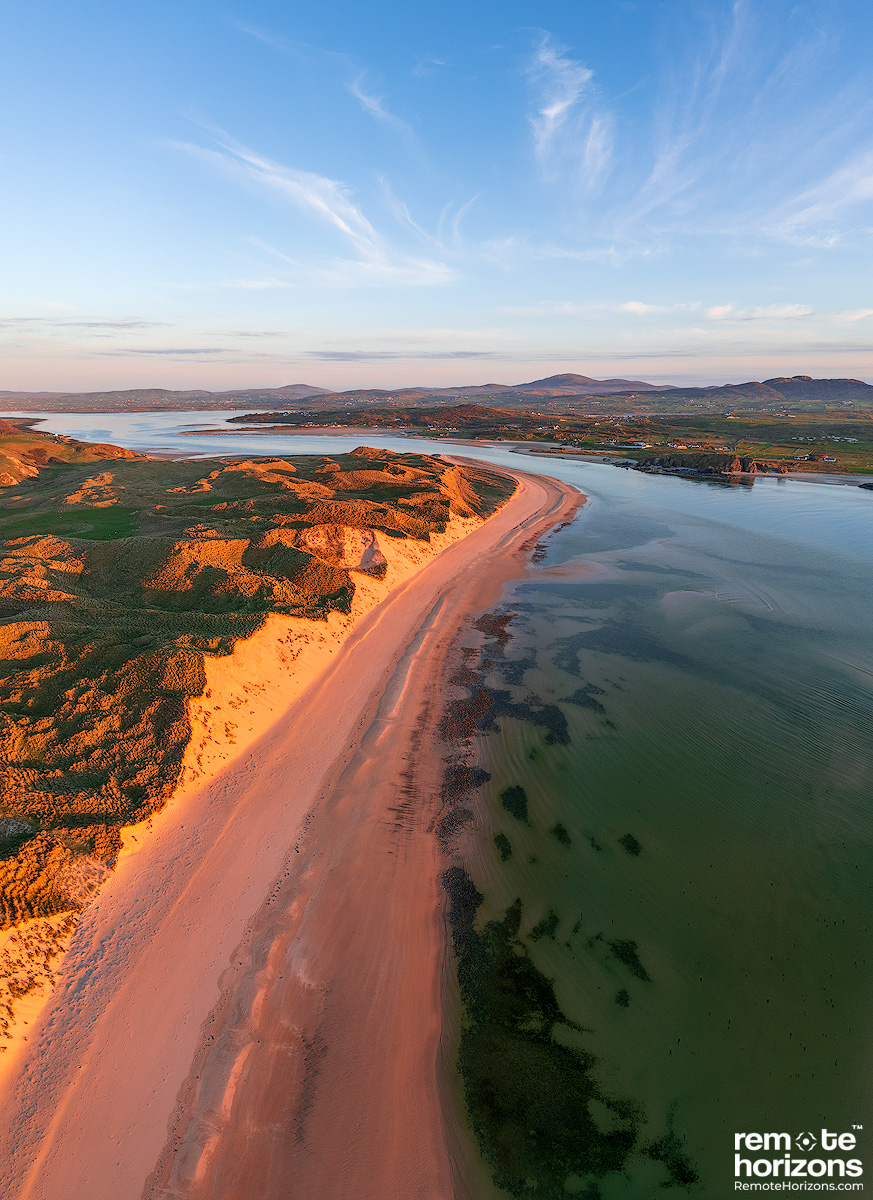
Rotating Gimbal
The DJI Mini 3 Pro has one camera feature which none of the other DJI drones can boast of – the gimbal rotates allowing you to take vertical images. I can’t stress enough how much of a benefit this is for landscape photography. To create vertical landscape photographs such as the one above on any other DJI drone, you have to use the vertical panorama mode or manually create vertical panoramas. The primary disadvantage of this method is that you have no way to pre-visualise what your landscape photograph is going to look like. This is particularly difficult with aerial landscape photography as you are already capturing images from a perspective your eye is not used to.
I can’t tell you how many times I have captured a series of images for a panorama, only to be disappointed by how the stitched image looks or to have been unable to stitch the images at all. The ability to rotate the gimbal and take vertical format photographs is one of the most important developments in drone technology for landscape photographers and this should be a huge consideration when picking which drone you want to buy.
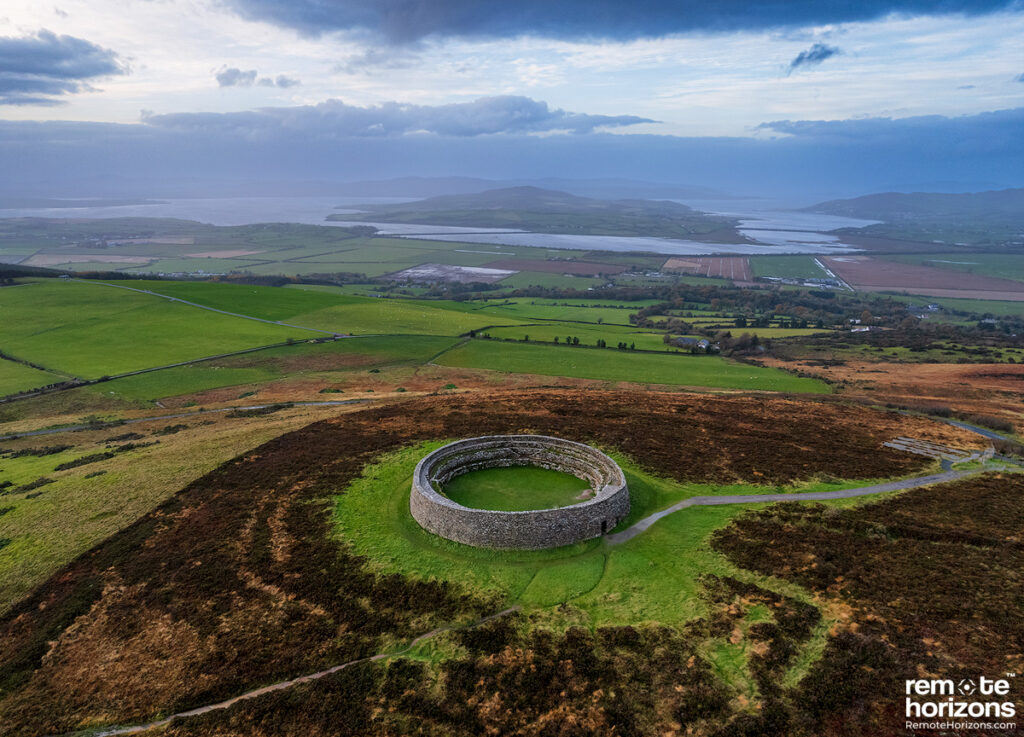
Physical Capabilities (speed, wind-resistance, flight duration etc)
Wind
The DJI Mini 3 Pro will not be as fast, fly as well in strong winds or be as stable in the wind as its bigger brother, the DJI Air 2s, just as the DJI Air 2s will not be as capable in the wind as the DJI Mavic 3. I fly and take my aerial landscape photographs on Ireland’s rugged north and west coasts. These areas are exposed to the full force of high winds from the Atlantic Ocean and I am thankful for the excellent high-wind capabilities of my DJI Air 2s. I would be much more hesitant flying a DJI Mini drone in such high winds. However, if I lived in Tuscany (I wish!) where the skies are more forgiving, wind capabilities would be less important.
Given some of the nicest light for landscape photography comes before, during and after storms, I believe that having a DJI Mini 3 Pro could potentially limit my ability to take landscape photographs on these occasions. Again, when considering buying a drone you really need to think about where you will use it, in which conditions, and how frequently in those more extreme conditions.
Battery
The DJI Mini 3 Pro has excellent battery life, marketed at 34 minutes, similar to the DJI Air 2s. I am a sensible and safe drone flyer, so I always return to land long before my battery runs out. This ensures I won’t get caught out by a change in wind or having to divert around people etc. Realistically, I get around 20 minutes from each of my 3 batteries. You can expect a similar experience if you use a DJI Mini 3 Pro.
The DJI Mini 3 Pro has a very interesting new feature – you will be able to buy an ’Intelligent Flight Battery Plus.’ This will extend the battery life to 47 minutes (real world will be less of course). Anything which allows you to stay in the sky for longer before having to land for a battery change is a very positive change. You will be able to focus more on capturing landscape photographs and less on strategically timing your battery changes to ensure you don’t miss any nice light. It should be noted that with this larger battery the weight of the drone increases and you can no longer fly in places only drones under 250g can go.
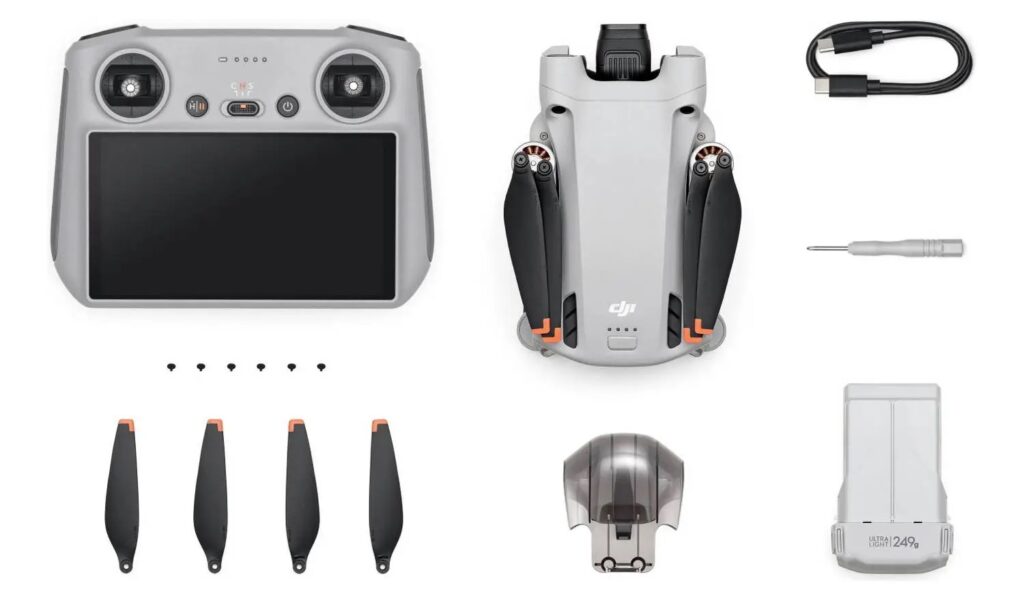
Controller Options
The DJI Mini 3 Pro is a drone which is likely to be sought after by a wide range of landscape photographers with different needs. DJI have considered this and are giving several options in terms of controlling the drone.
- For those landscape photographers who own a drone already, the lowest price package comes without a controller so you can use a compatible controller you already have.
- If you have a mobile phone with a large and bright screen, you can choose a controller which you dock your phone in and use the excellent DJI Fly app to control your drone.
- For landscape photographers who want simplicity and the brightest screen to fly with (particularly useful for photography on bright days) you can opt (at a price) for the new DJI Smart Controller.
As an example, as a DJI Air 2s owner, I could buy the basic Mini 3 Pro package without the controller and use my Air 2s controller for both drones. Whilst I won’t be buying a second drone, if in future I need to I really appreciate DJI not forcing me to buy a second controller I wouldn’t use.
Weight Comparison
The DJI Mini 3 Pro is small and light – it weighs less than 250g, whereas the Air 2s is 595g and the Mavic 3 is 896g. Landscape photographers often suffer for their art, carrying heavy bags full of camera equipment across wet rocks, through waves, up mountains etc. Unnecessary extra weight is not something which is going to improve anyone’s photography experience. This is were a drone like the DJI Mini 3 Pro really shines as it can be added into an existing photography bag more easily than its big brothers. This means it becomes an extra photographic option, more like carrying an additional lens than carrying an additional full imaging system. Please note that the weights above are for the ’in the air’ weight of each drone i.e. the drone with 1 battery. You will also have to carry additional batteries and a controller.
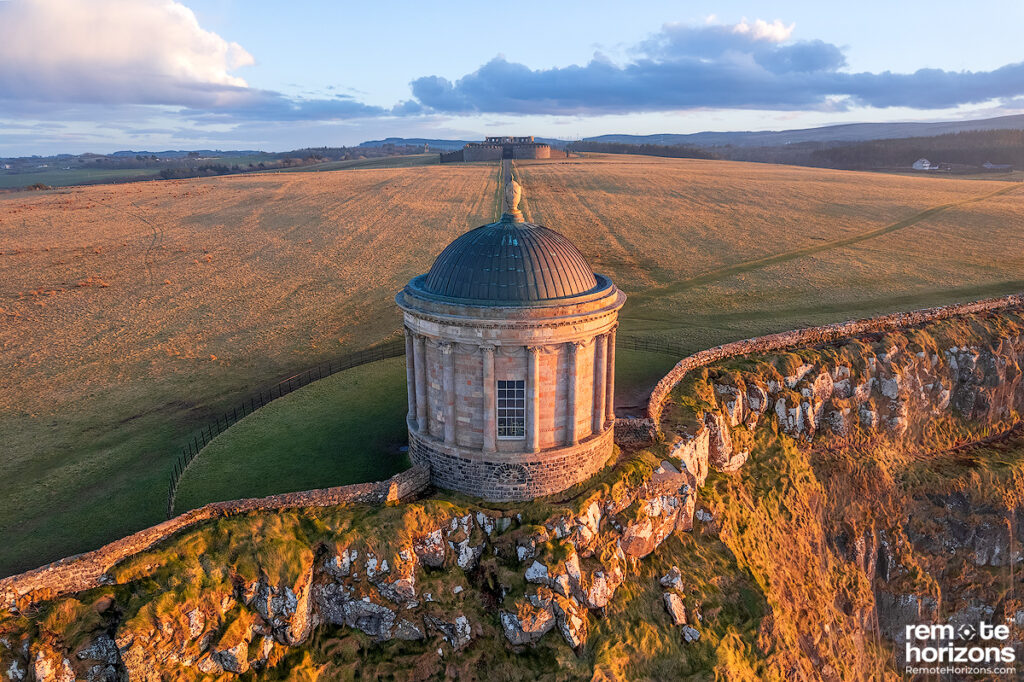
What type of landscape photographer should buy a DJI Mini 3 Pro?
I would recommend this drone for the following types of landscape photographer:
- Photographers who want to occasionally capture aerial landscape photographs and don’t mind that they don’t have the best image quality available in a consumer drone. This will fit nicely in your existing camera bag and you won’t have as many drone regulations to consider.
- Those who only post their work on social media/websites and don’t ever make big prints or won’t be supplying files for commercial use.
- Photographers who will fly mostly around other people, in urban areas or who don’t want the additional stress and pressure of dealing with more stringent flight regulations.
- You know you will shoot mostly vertical landscape photographs and will get use out of the rotating gimbal.
Buy a larger drone with at least a 1 inch sensor for your landscape photography if:
- You want the best image quality possible in terms of colour, dynamic range, detail etc. This is especially true if you want to make high quality larger prints.
- You are going to fly in windy conditions regularly and you feel you would like a more stable and physically capable drone overall.
- You will normally fly in wide open spaces away from people and urban areas and your photography focus is on aerial photography (meaning you are not also carrying heavy cameras and lenses).
Will I be switching to a DJI Mini 3 Pro?
I am flying and photographing with a DJI Air 2s. The image quality for landscape photography is exceptional and I feel that the Mini 3 Pro would be a step down. I also fly in windy conditions and I like the extra reassurance that the more powerful, faster drone gives me.
However, I am hoping that one feature in particular from the Mini 3 Pro makes its way to all future DJI drones – the rotating gimbal. If DJI can make my life easier by incorporating this feature into the Air 2s future replacement, they will almost certainly secure a sale!
May 2022: Please note that this article has been written at the time of release of the DJI Mini 3 Pro and makes a number of assumptions based on the announced specifications. As more real-world reports and experiences of the drone become available I will update this article accordingly.
